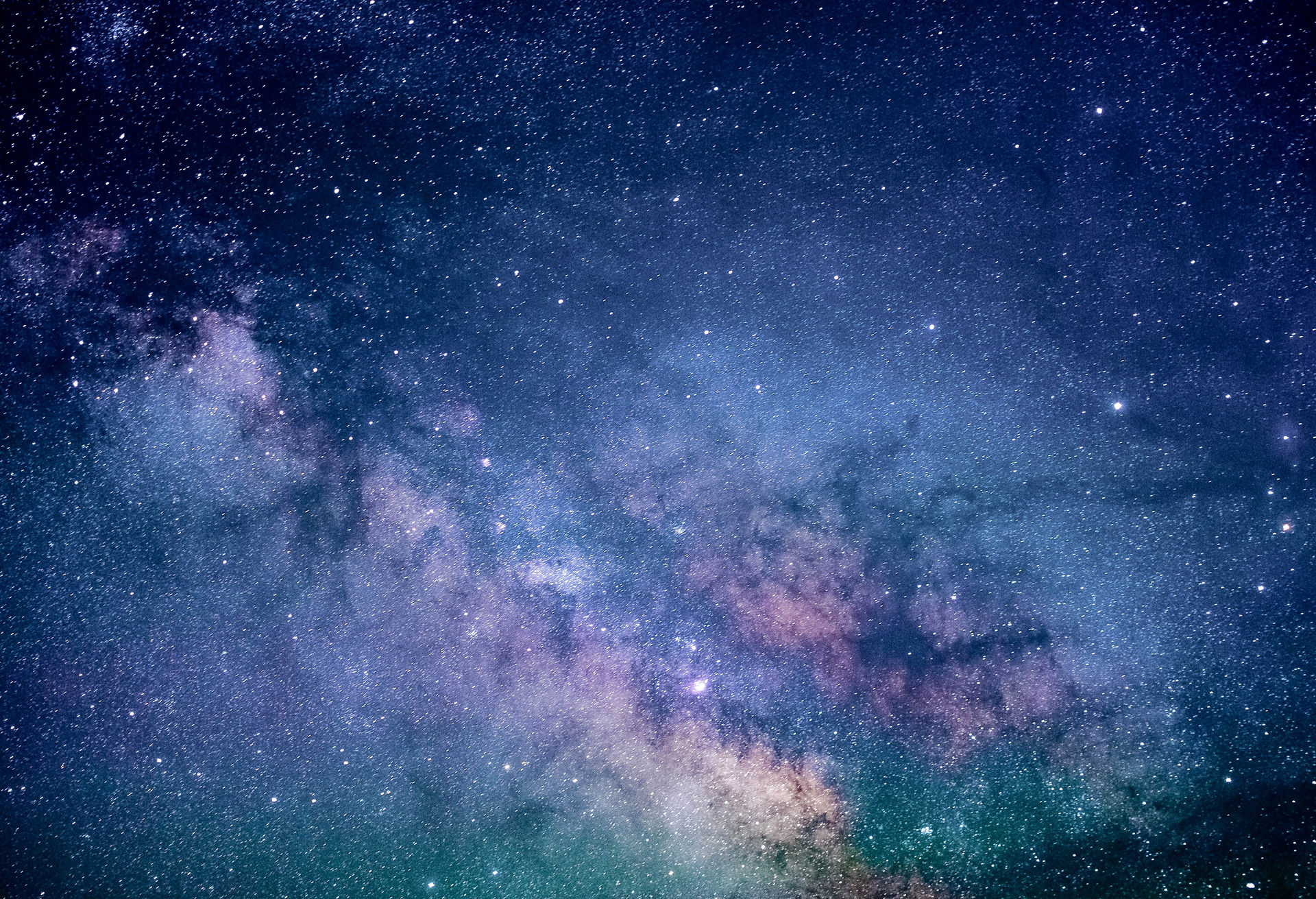
Image copyright: Rafael Defavari, via apod.com
Investigating the Early Stages of Massive Star Formation in Protocluster Environments: Multiwavelength Studies of Extended Green Objects
I am studying a sample of high-mass protoclusters in the Milky Way which were originally identified by Cyganowski et al. (2008) as Extended Green Objects (EGOs). I am using high-sensitivity, matched-angular resolution JVLA K- and C-band (1.3 and 5 cm) data in combination with ALMA Band 3 and Band 6 (3.2 and 1.3 mm) observations, as well as mid-infrared 19.7 um and 37.1 um data from the SOFIA FORCAST instrument. These targets are massive protoclusters whose members are believed to be in an evolutionary state just prior to the emergence of UC HII regions - a critical phase for distinguishing between competing theories of massive star formation.
Modern theories of massive star formation can be divided into two main paradigms: Monolithic collapse models and Hierarchical models. In Monolithic models, such as Turbulent Core Accretion (McKee & Tan, 2002) or the numerical simulations described in Banerjee & Kroupa (2017), the initial condition for protostellar formation is a single core of order ~0.1 pc. More massive stars are thus formed from more massive cores. In Monolithic collapse models, a parent cloud contains many such single cores with a mass distribution which mirrors the stellar IMF (offset by some efficiency factor ε). These models tend to produce protoclusters in which the protostars are more centrally-concentrated than are the stars in main-sequence (unembedded) star clusters. They make no prediction as to stellar birth order (i.e. low-mass stars vs. high-mass stars form first/last). They require the presence of stable, massive starless cores, possibly up to of ~100 Jeans masses (Tan et al. 2014).
In contrast, Hierarchical collapse models suggest that evolution of individual protostars is not separable from the protocluster environment as a whole. The Competitive Accretion Model (Bonnell et al. 2001, 2004; Bonnell & Bate 2006) suggests that all protostars within a protocluster "compete" for the same reservoir of gas (i.e. gas in the parent clump); it is those stars at the bottom of the gravitational potential that will accrete the most material and thus become the most massive members of the protocluster. Competitive Accretion dictates that high- and low-mass stars should be found forming simultaneously, rather than, e.g., low-mass stars forming first. It also predicts that low-mass stars should be found forming within the much-larger accretion reservoir of a central, high-mass star. The Global Hierarchical Collapse (GHC; Vázquez-Semadeni et al. 2017) model, in contrast, suggests that the star formation rate in a protocluster increases with time. Mass is funnelled onto protostellar cores in gravitational potential minima by filaments within the clump; these cores will become the high-mass stars in the protocluster. As the filaments increase in density, lower-mass stars will begin to form within the filaments themselves, and thus the filaments begin to direct both gas and stars toward the higher-mass cores. As these higher-mass cores become massive protostars and begin to produce powerful radiative and outflow feedback, star formation within the cluster is quenched. GHC predicts some low- and high-mass stars forming simultaneously, but also a small (~1/3 of the total) population of older low-mass stars within the cluster, formed during the earliest stages of star formation in the cluster. The GHC model therefore predicts a stellar birth order in which the high-mass stars form last.
As a group, Hierarchical formation models tend to produce "subclusters" of a few to a few tens of stars, which then eventually merge to form the final, complete cluster (Bonnell et al. 2003). Consequently, Hierarchical models predict protoclusters that are less centrally-concentrated than their main-sequence counterparts.
For my doctoral thesis, I aim to constrain the bolometric luminosities of the most massive protostars in each EGO, determine the mass and evolutionary state of the individual protocluster members, and determine the physical distribution and level of mass segregation of the protostars in each EGO. As current, competing theories of massive star formation make different predictions for source clustering, birth order, and overall cluster demographics, constraining those properties for these sources will allow for a thorough exploration of star-formation theories in a small but statistically-significant sample of massive protoclusters.